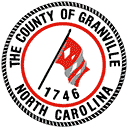Decode Nutrition Labels
go.ncsu.edu/readext?909331
en Español / em Português
El inglés es el idioma de control de esta página. En la medida en que haya algún conflicto entre la traducción al inglés y la traducción, el inglés prevalece.
Al hacer clic en el enlace de traducción se activa un servicio de traducción gratuito para convertir la página al español. Al igual que con cualquier traducción por Internet, la conversión no es sensible al contexto y puede que no traduzca el texto en su significado original. NC State Extension no garantiza la exactitud del texto traducido. Por favor, tenga en cuenta que algunas aplicaciones y/o servicios pueden no funcionar como se espera cuando se traducen.
Português
Inglês é o idioma de controle desta página. Na medida que haja algum conflito entre o texto original em Inglês e a tradução, o Inglês prevalece.
Ao clicar no link de tradução, um serviço gratuito de tradução será ativado para converter a página para o Português. Como em qualquer tradução pela internet, a conversão não é sensivel ao contexto e pode não ocorrer a tradução para o significado orginal. O serviço de Extensão da Carolina do Norte (NC State Extension) não garante a exatidão do texto traduzido. Por favor, observe que algumas funções ou serviços podem não funcionar como esperado após a tradução.
English
English is the controlling language of this page. To the extent there is any conflict between the English text and the translation, English controls.
Clicking on the translation link activates a free translation service to convert the page to Spanish. As with any Internet translation, the conversion is not context-sensitive and may not translate the text to its original meaning. NC State Extension does not guarantee the accuracy of the translated text. Please note that some applications and/or services may not function as expected when translated.
Collapse ▲Learning how to read and understand nutrition food labels can help you figure out which foods and beverages are healthiest. Many people simply believe what the front of the manufacturer label tells you but there can be a lot of trickery and confusion. So, the best way to understand what you are truly consuming is by reading between the lines. That means understanding what the numbers and the actual ingredients are in a product. The main three bad things we look at in a product is fat, sodium, and sugar. But there are good fats and bad fats and there is a different between natural sugar and added sugar. All of the food products have nutrition facts label and they can help you make healthier choices to learn how to eat smart by using your math and reading skills. Join us this month on Tuesday, January 24, 2023 at 12:00 p.m. (EST) for our virtual workshop on Eating for a Healthier, Stronger You. Register for this free workshop.
Try the following recipe courtesy of the Idaho Health Matters. For more information on Food for Thought programs, check us out online at Facebook or email jennifer.brown@ncsu.edu
Skillet Pasta Dinner
serves 6
1 lb ground turkey, beef, or Italian sausage
1 medium onion, finely chopped
2 cloves garlic, minced
8oz tomato sauce
1 cup water
8oz uncooked pasta (ziti, penne, macaroni)
2 cups fresh or frozen veggies of choice (zucchini, carrots, spinach, mushrooms, or peppers are all good choices)
Brown the ground meat, onion, and garlic in a skillet or a heavy saucepan. Drain off any grease. Add the tomato sauce, water, and uncooked pasta. Cover and simmer for 10 minutes. Add the fresh or frozen vegetables, stir and continue cooking until the pasta and vegetables are tender (about 10 more minutes). Serve with a sprinkle of cheese and fresh herbs, like basil, if you have them.




